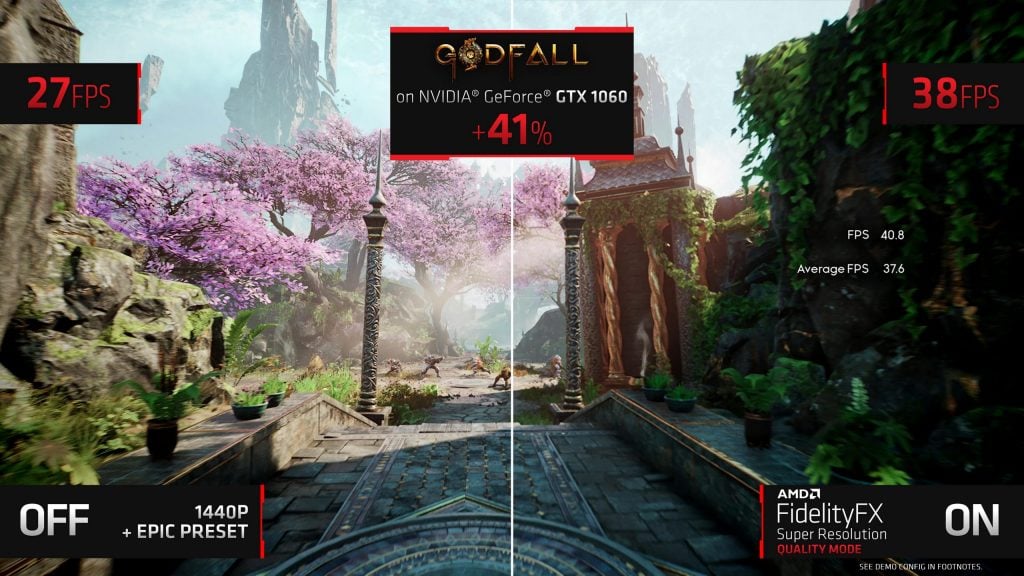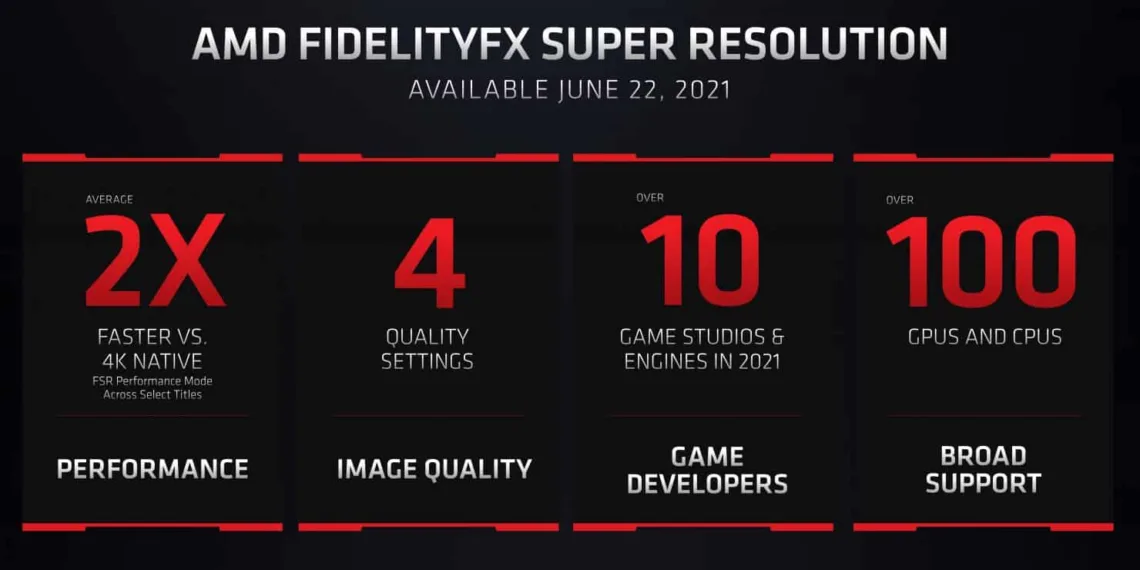The Blue team will enter into the hot discrete GPU market anytime soon; however, their lack of experience in making high performing GPUs is making them even tenser, obviously. These days, gamers want high frame rates from games and better image quality, reflection, shadows, game physics, and much more.
Intel, who is just planning to step into the GPU market mostly dominated by NVIDIA, convincing gamers to go for Intel GPUs would be a difficult job. On the other hand, AMD brought the much-awaited NVIDIA DLSS alternative during the keynote, known as the FidelityFX Super Resolution.

The interesting thing about AMD’s resolution upscaling technology is that it uses spatial upscaling technique and does not rely on artificial intelligence or machine learning. So, implementing it on any kind of hardware is possible as AMD demoed this tech on a GTX 1060 as well.
AMD’s FidelityFX SR does not rely on motion vectors or even history buffers, which means that a performance boost with Tensors alike is unnecessary for the technology to work. Now, we have no idea whether AMD could provide better upscaling with its FSR against NVIDIA’s DLSS, so we have to wait until June 22nd.
Meanwhile, on Twitter, in a response to Kyle Bennett, who asked Raja Koduri whether Intel would use AMD’s cross-platform FSR technology which is supported by DirectX12, DirectX11, and Vulkan APIs, so it should also work on Intel GPUs.
So, Koduri replied that Intel is already looking to give FSR a try on the upcoming Xe-HPG based GPUs. It will be interesting to see AMD’s tech get universally adopted even on upcoming Intel GPUs as well, and this will even make things easier for game developers as well.
via Videocardz








